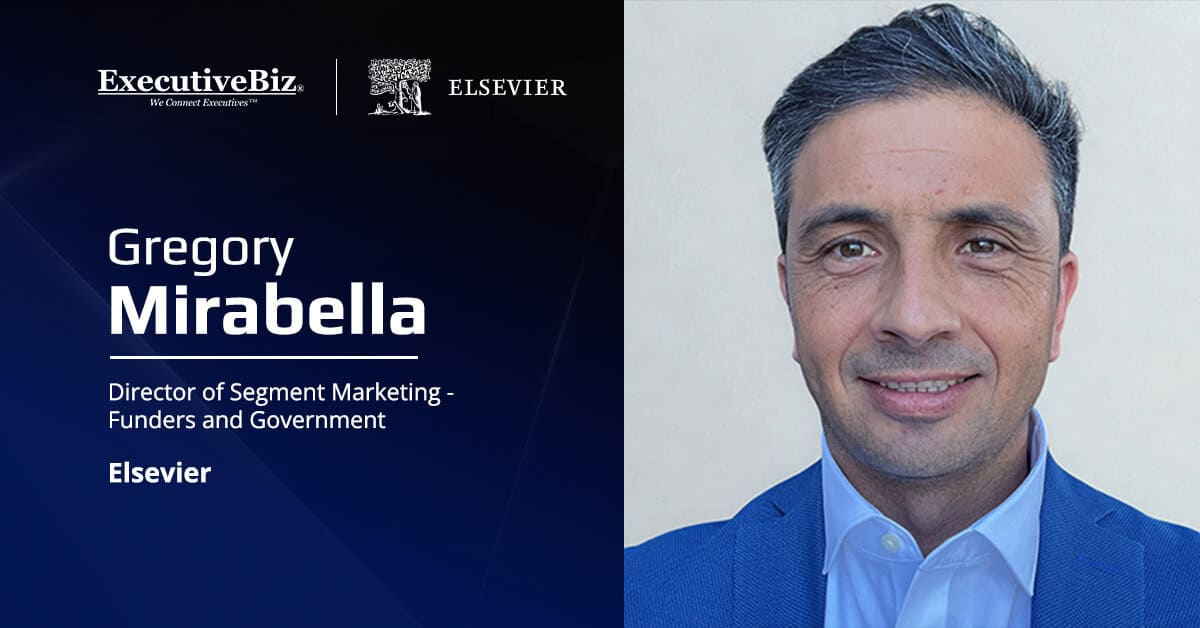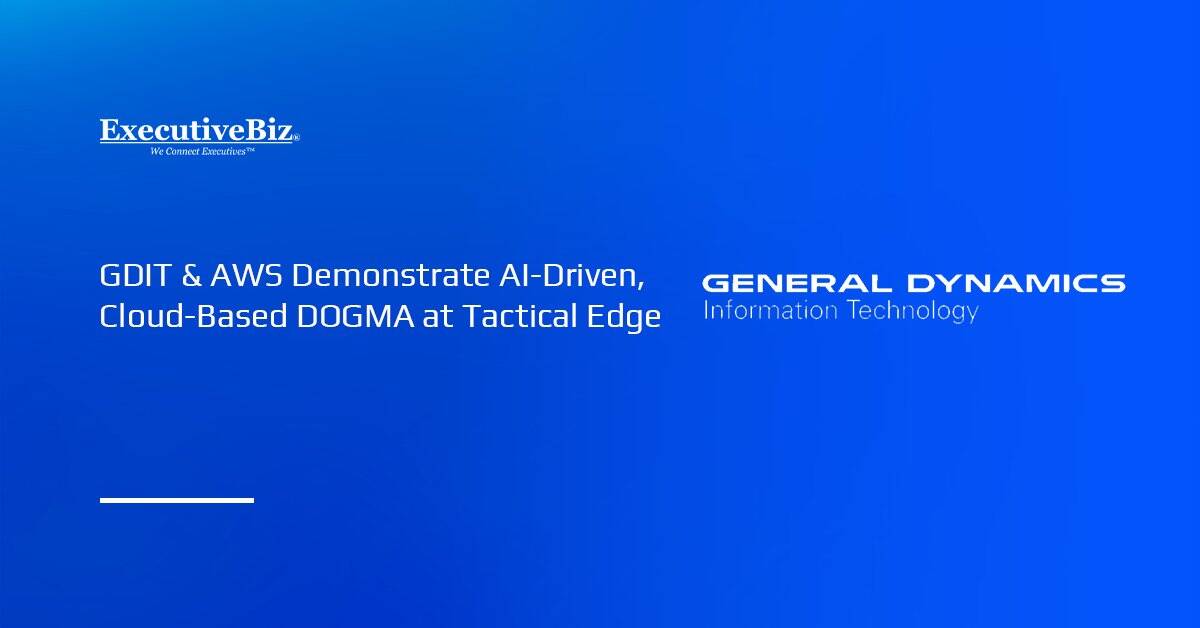Elsevier began as a publisher of scientific materials but the purview of the Amsterdam-based company has evolved to encompass thousands of team members across the world developing data platforms and analytic practices and partnering extensively with major government and academic organizations.
Gregory Mirabella directs the marketing segment for funders and government at Elsevier. In this role, he leads brand strategy, go-to-market planning and thought leadership initiatives designed to support national research funders, government agencies and ministries. His work focuses on helping these organizations evaluate their research ecosystems, demonstrate research outcomes and impact and make evidence-based decisions that build public trust.
We connected with Mirabella for a new Executive Spotlight to learn more about what Elsevier does, his perspective on the importance of research security and improvements he’d like to see in collaborations with the public sector and academia.
ExecutiveBiz: Tell me about what Elsevier does and about its work with the U.S. federal government specifically.
Gregory Mirabella: Elsevier is a global leader in information and analytics, supporting researchers, healthcare professionals and funders. Our story began 140 years ago as a scientific publisher, and today our mission extends into data platforms and analytics that help advance science, improve health and deliver benefits to society.
We combine trusted content with tools that enable evidence-based decisions. Whether it’s a researcher identifying collaborators, a clinician evaluating the latest findings or a funding agency planning research investments, our role is to provide clarity. Solutions like Scopus, Pure, InsightGraph, SciVal and Researchfish all contribute—but what matters most is how we work alongside organizations to interpret evidence and strengthen their strategies.
In the U.S., we partner with federal agencies such as the National Science Foundation and the National Institutes of Health. Beyond providing data, we help them align investments with priorities, track outcomes and demonstrate broader impact. With NSF’s TIP Directorate, for example, we co-created a public-facing portal that maps nearly 5,000 grants, giving policymakers insight into regional and technological trends.
So while Elsevier is known for journals and data, our real value to government lies in partnership—helping agencies tell the story of their impact on research, showcase outcomes, and make confident decisions that strengthen the national research enterprise.
EBiz: What is your role at Elsevier and how did you reach this point in your career?
Mirabella: I lead marketing for Elsevier’s funder and government segment. In simple terms, my job is to connect what policymakers, agencies and funders care about most with Elsevier’s solutions that can help them achieve their goals. That means developing go-to-market strategies, shaping thought leadership, and making sure we’re seen as a trusted partner in their mission.
I’ve been with Elsevier for over a decade, and my journey here has been a progression through roles that always came back to one theme: helping decision-makers use data to make better choices. I started in business development, spending time with customers to really understand their challenges. Later, I moved into portfolio marketing in the corporate sector, focusing on data-driven positioning. Just over a year ago, I stepped into my current role, which feels like the natural next step.
What motivates me most is the chance to bring my background in data and analytics into a mission-driven environment. It’s rewarding to know that our work doesn’t just support one customer—it strengthens the broader research ecosystem. By working with funders and government agencies, we’re helping to enable the science and innovation that will shape society’s future. That’s a responsibility I take seriously, but it’s also what inspires me every day.
EBiz: Why is research security a critical topic in today’s geopolitical landscape?
Mirabella: Research security has moved to the center of the global conversation because science has become both more collaborative and more strategically important. On the one hand, openness drives discovery. On the other, research outputs—from AI and quantum to biotechnology—are now seen as national assets. That makes them targets for misuse, cyber threats and even geopolitical competition.
The challenge is striking the right balance. Too much restriction can stifle innovation; too little protection risks trust, integrity and national security. Governments and funders are under pressure to safeguard investments, comply with evolving regulations and protect sensitive data—while still encouraging collaboration.
At Elsevier, we think about this as “knowledge security.” It’s not about shutting doors, but about building safeguards that enable trusted environments for science. We partner with funders and government agencies to deliver tools, data and analytical services that safeguard intellectual property, uphold research integrity and enable science to thrive securely.
EBiz: Where would you like to see collaboration between the government, academia and industry go in the future?
Mirabella: I’d like collaboration to move from transactional projects toward strategic, long-term frameworks. Grants, contracts and technology transfers are important, but we need broader alignment across government, academia and industry on shared goals like competitiveness, workforce development and innovation leadership.
Each sector brings something essential: government provides policy and resources; academia delivers discovery and talent; and industry brings the ability to scale and apply solutions. The opportunity is to design these contributions together from the start, rather than sequentially.
This matters because the boundaries between sectors are already porous. Researchers move between universities, labs and companies throughout their careers. Governments rely on both academia and industry to achieve policy priorities. Collaboration isn’t optional—it’s how modern science and innovation already work.
Elsevier has a unique vantage point, since we support universities in evaluating excellence, help funders align investments with mission and work with industry to track innovation pathways. From this position, we see the value of stronger frameworks and incentives that connect these efforts.
Looking forward, I’d like to see collaboration focus not just on producing knowledge but on building trust and demonstrating impact. When the public sees clear results from cross-sector partnerships—whether in health, technology or national priorities—it strengthens both confidence in science and the policies that support it.





